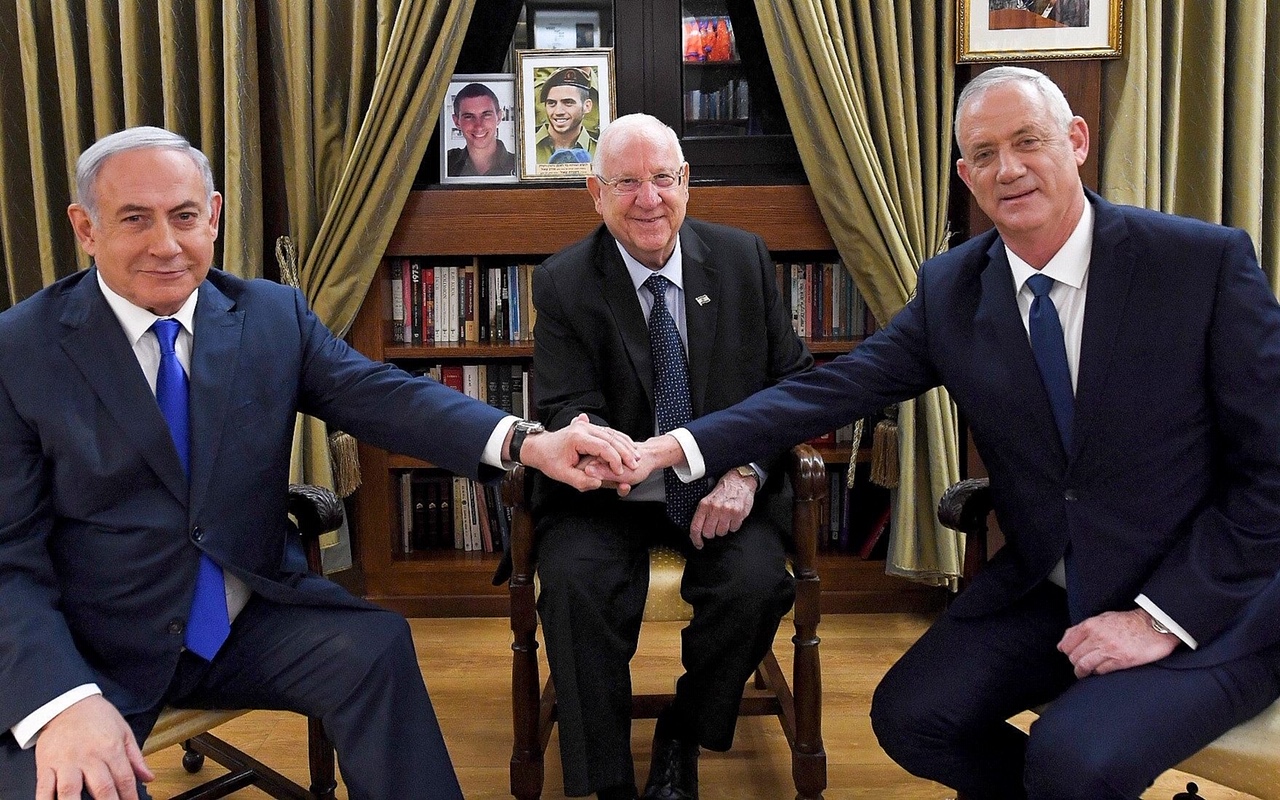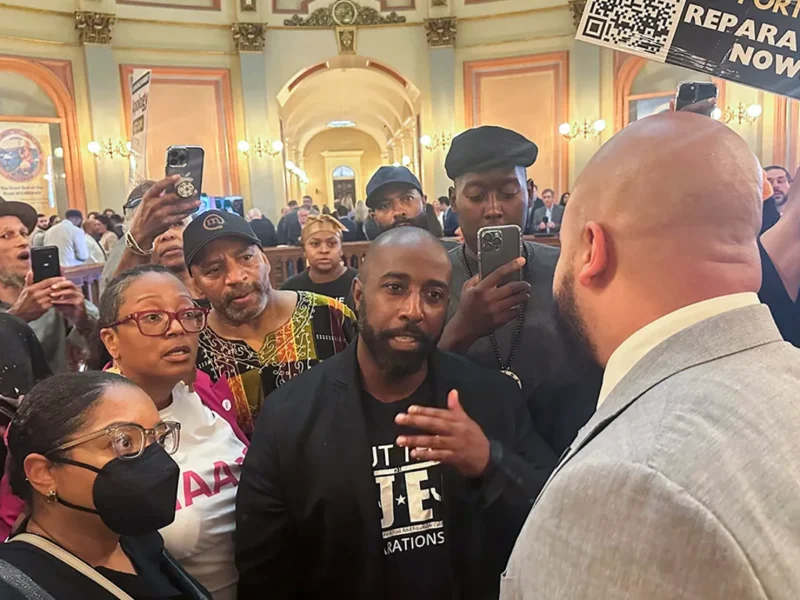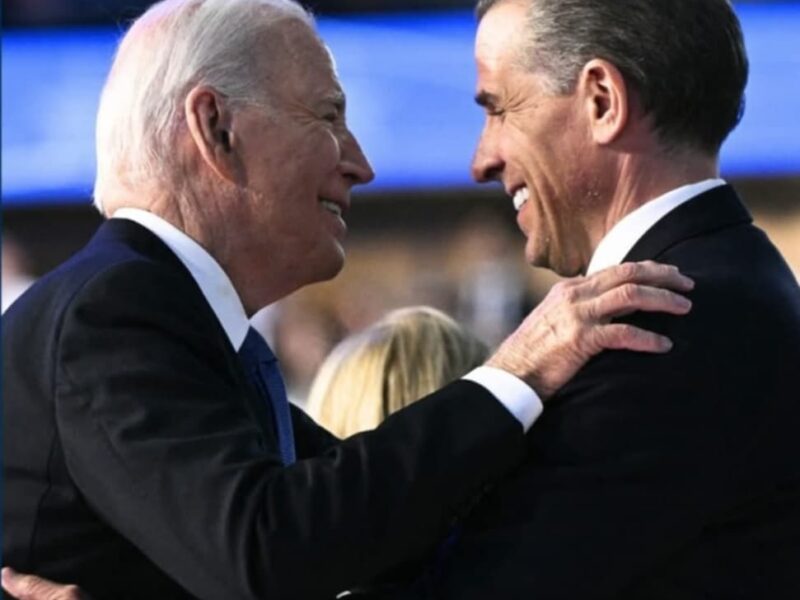Israel’s Emergency Unity Coalition is Coming Together
Israel is forming a unity government to address the crisis brought on by the Wuhan Virus. Israel has held three inconclusive elections in the last year. While the prospect of a unity government has been popular in Israel for the past year, the political leaders have been unable to reach a deal. This is largely due to an unwillingness of the centre-left to accept a government led by Prime Minister (PM) Binyamin “Bibi” Netanyahu. Netanyahu has been indicted for corruption in several cases based largely on circumstantial evidence. An effort has been afoot to deny Netanyahu the leadership of the Israeli government in spite of his popularity with the voters. (Featured image above is Israeli President Reuven “Ruby” Rivlin center, Prime Minister Binyamin “Bibi” Netanyahu left, and Kahol Lavan Leader Binyamin “Benny” Gantz right).
Israel has undergone three elections in the last year, all of them won by the centre-right coalition led by Netanyahu; read more here. The opposition centre-left party Kahol Lavan (Blue and White after the party colours and in reference to the Israeli flag) is led by Benny Gantz. This party came in second in an election in April of 2019. When no government could be formed an unprecedented second election was held in September where Kahol Lavan came in first. In neither election did Kahol Lavan and its coalition partners even come close to those in support of Bibi Netanyahu, but neither side could muster enough seats to form a coalition. A coalition must have 61 seats (a majority of 120 total seats) in order to govern. In the recent elections of March 2nd, Kahol Lavan came in a close second to Netanyahu’s Likud (Coalition) Party once again, but far behind any possibility of forming a government. Netanyahu and his allies won 58 seats falling just three shy of a majority. With the Wuhan Virus crisis in full swing, it was decided that a unity government made up of both of the largest parties should be formed. Again, this has been a popular prospect with voters throughout the past year.

This arrangement is leading to the breakup of several major party lists. Kahol Lavan, for example, is actually three parties running together on a single list. They have agreed in advance of the election how many seats will be doled out to each party and they all run together for seats in the Israeli parliament called the Knesset (community gathering or assembly). In Israel’s multiparty proportional parliamentary system voters cast their votes for party lists nationally not for individual candidates. Parties win seats based upon their percentage of the vote. Parties must cross a minimum threshold percentage, 3.5%, in order to earn seats. Thus, smaller parties have been eager to form lists with larger parties to consolidate their votes and increase the likelihood that they will hold seats in the Knesset.
Kahol Lavan is actually breaking into four parties due to the complexities of the political situation. Benny Gantz and his Resilience Party (white) will be joining the coalition with Netanyahu. Yesh Atid (There is a Future) Party leader Yair Lapid will not be joining the coalition and his party will instead lead the opposition. The Telem (Statesman) Party of former Likud Minister Moshe Ya’alon will also be in the opposition. Two members of Telem are breaking off into another party (Derech Israel – Path for Israel) so they can join the coalition government. Gantz’ Resolution Party will continue to be called Kahol Lavan even after the schizm. Also splitting up will be Israel’s old main left party Labor. Labor ran with the far-left Meretz (Vigour) Party so Labor can also join the coalition. Labor leader Amir Peretz, who previously led the party over a decade ago, will be joining the coalition and will become a minister in the government. In this area, Netanyahu has achieved a major political victory by breaking up the greater Kahol Lavan Party and the Labor-Meretz list.
The Unity Coalition
Israel had a unity government once before in 1984. After an inconclusive election then Alignment (now called Labor) Party leader Shimon Peres formed a government with then Likud Party leader Yitzhak Shamir. Peres was Prime Minister for two years and Shamir for two years afterward. In the 1988 election Likud won a clear victory and was able to form a government. The current unity government is being constructed out of the same precedent: Netanyahu will serve as PM for the first two years to be followed by Gantz for the last two years. If Netanyahu takes this opportunity to retire from Israeli politics he will do so in 2022 as Israel’s longest serving Prime Minister having served about 15 years in office collectively and twelve years consecutively. Netanyahu recently surpassed Israel’s founding Prime Minister David Ben-Gurion who served as PM for thirteen years from the late 1940’s into the 1960’s.
Although Netanyahu has served as Prime Minister for so many years, there is a strong sense among many Israelis that Bibi’s leadership is necessary in these trying times. He is an experienced elder statesman who has brought the country to prosperity and relative security. There are also many Israelis who wish to see him retire and allow a new generation of leaders to emerge. Naturally, the left will not have any chance at forming a government until he leaves the political arena. It seems both sides will now achieve their desired end.
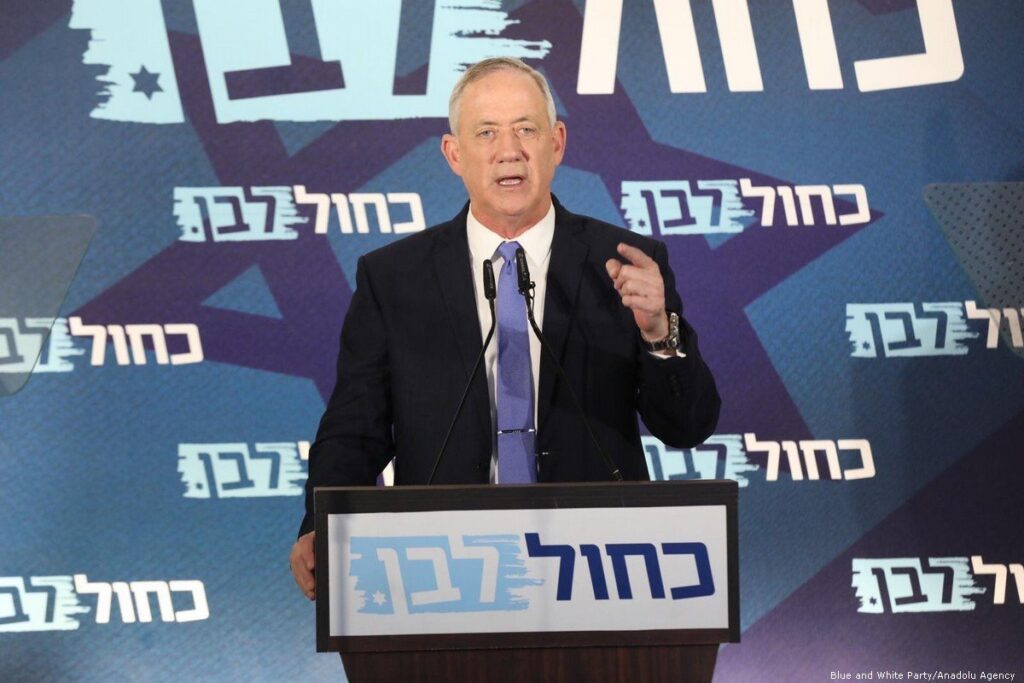
Several other parties are also thought to be joining the coalition government including the Yamina (Right) Party a secular right-wing party. Also the Shas (Talmud) and United Torah Judaism Parties who represent Israel’s Haredi (ultra-orthodox) population. The Haredi are eager to preserve their special privileges which include exemption from compulsory military service and government subsidies that allow Haredi men to study in religious schools instead of working. The coalition could thus encompass as many as 78 seats far above the necessary 61. This could enhance the stability of the government as there are many possibilities for shuffling certain parties in or out as the circumstances require. The government will still rest on Gantz, his party and his Labor allies, without whom the coalition cannot retain a majority.
How long this government will last is the real question. Unlike in the United States where there are fixed terms of office, the Knesset can call early elections at any time, typically when there is no governing coalition. Coalitions can breakup when any one of several party leaders decides an issue is important enough to bring on early elections. Netanyahu has a vested interest in keeping the coalition together for at least the next two years since that will continue him in office. Gantz, however, may breakup the coalition early if he finds an electoral advantage. If, somehow, the government goes the full term until 2024, there will be a stable transition of power from Netanyahu to Gantz and a stable unity government through the crises Israel will face during this term.
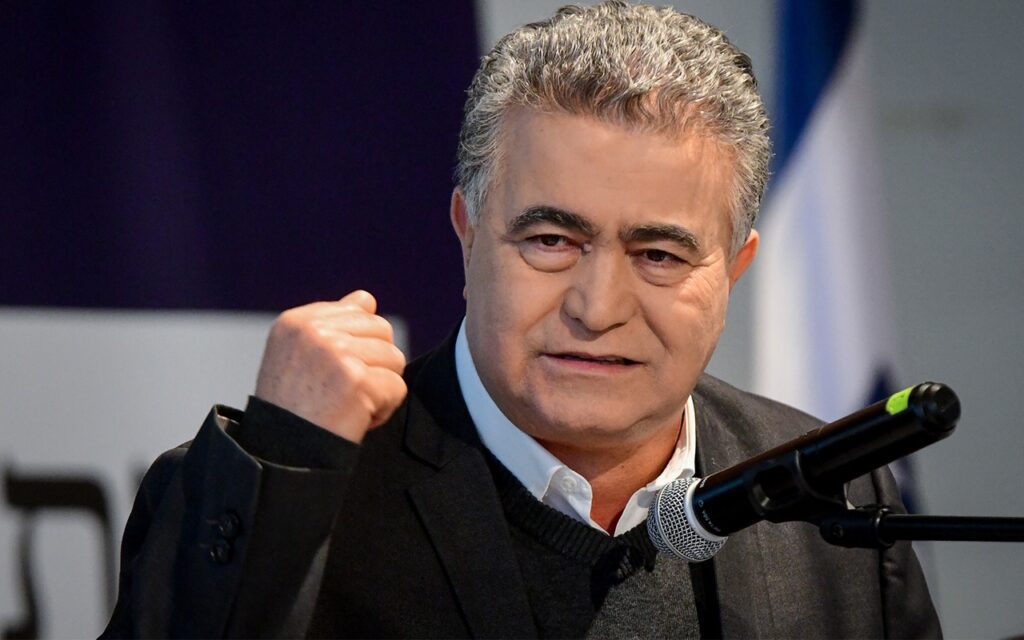
The Wuhan Virus has caused much alarm in Israel and the formation of this government will come as some relief to Israeli voters. A fourth election was not a desirable outcome. In addition to the biological threat, Iran looms large on the horizon as it seeks regional dominance and its oft stated goal of “wiping Israel off the map.” The Arab countries have been slowly warming to Israel as an ally against Iran. The Trump administration has also put forth a peace initiative that could provide an end to the seemingly endless conflict with the so-called Palestinians. These are tricky times and Israel must play its cards right as it moves through the fast shifting sands of Middle Eastern Alliances and antagonisms.
The Cabinet
The cabinet assignments as understood at the moment may change. Unlike the British or American cabinets, the Prime Minister is not in charge of the cabinet as such. The cabinet is more like a committee of high ranking political leaders where the PM is the chairman. This collegial cabinet system means the opinions and inputs of all of the cabinet members are heard and considered. In the United States, by contrast, the President appoints the members of his cabinet and they serve at his pleasure. There is a clear subordinate relationship that does not exist in the Israeli system. According to Haaretz News The Likud Party will retain the Prime Minister’s office for two years, the important agenda setting office of Speaker of the Knesset, and the Transportation, Energy, Environment, Housing, Negev and Galilee Development, and Religious Affairs Ministries. Gantz’ Kahol Lavan Party will hold the critical Foreign Ministry, Defense Ministry, and the Justice Ministry portfolios. While Gantz may choose the Foreign Ministry portfolio for himself, as this is widely seen as the highest ranking office in the cabinet beneath the Prime Minister. Gantz is a former General in the Israeli Defense Forces (IDF) and he may choose the Defense Ministry portfolio instead. Kahol Lavan will also hold the Communications, Economy, Labor, Culture and Sports, Immigration and Absorption, Tourism, and Science and Technology Ministries. Labor’s Amir Peretz himself will have the Economy and Industry Ministry. Smaller parties often warrant only a single portfolio (cabinet post).
How the precise cabinet portfolios will be assigned we may not know for several days. The government is still coming together. It should be stable enough to outlive the Wuhan Virus crisis, but it remains to be seen whether the government can continue beyond that. Whatever the case, so long as a fourth election does not result within the next calendar year, at least voters will not have to go to the polls again for yet another inconclusive election.




